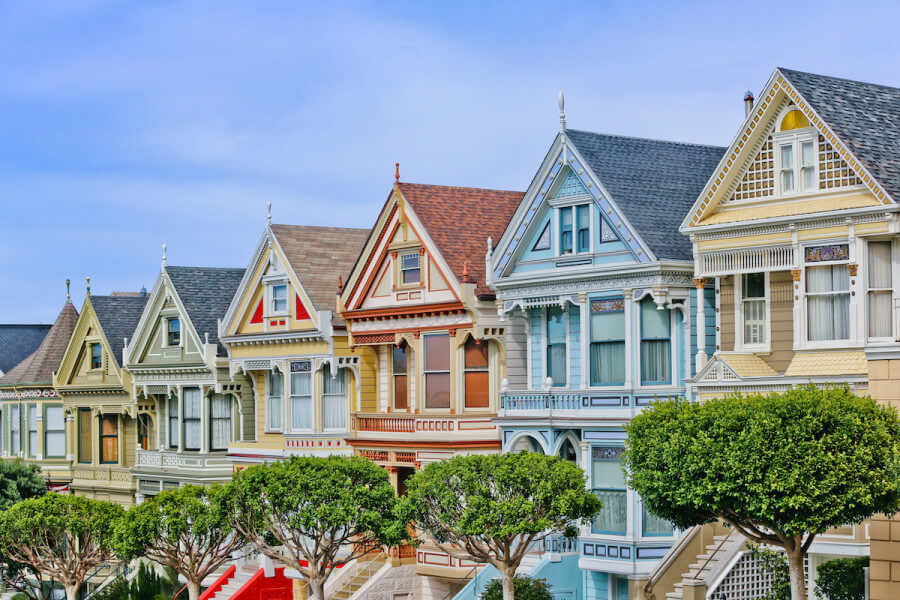
Victorian homes offer a classic yet timeless design appeal, with ornate aesthetics and décor that give both the interior and exterior of the structure a classy, intricate appeal. While many of today’s existing Victorian homes are practically historical structures, there are still situations where an architect might build with these design tenets in mind. Residential architecture firms often build Victorian-style homes because they offer plenty of unique, innovative options for customizing the space and matching the arrangement of elements to the lifestyle of the homeowner and their family.
The History of the Victorian Home
Victorian architecture is so named because its initial rise in popularity occurred during Queen Victoria’s reign in England. The Victorian architectural movement was a new, innovative method for allowing new middle-class homeowners the opportunity to add luxurious elements to their homes that were previously only available to more affluent landowners in the form of manors and grand halls.
Victorian architecture essentially began to replace Georgian architecture in the middle of the 19th century. It continued to maintain a high level of popularity all the way up into the later stages of the industrial revolution when it became possible to build homes for significantly less money. Countries such as America, Canada, Australia, and New Zealand began to see more of these homes as the century progressed.
There are many offshoots of Victorian architecture that are still around today throughout the world. The American South features a range of homes that utilized Victorian elements but did so in a fashion that was unique to the region. Queen Anne homes are another example of an architectural style that was directly influenced and inspired by the Victorian home architectural movement of the 19th century.
What Defines the Victorian Home?
The Victorian architectural style features a range of unique, classical design elements that are often distinct enough to recognize in various homes worldwide. Chances are, there are a few of these traditional homes in your area. Here are some of the essential elements for building a Victorian-style house.
Towers and Structural Height
Victorian homes are significantly taller than the average residential structure, often reaching up to three stories in height. As a result, the square footage of the average Victorian is larger than other common home types, such as bungalows and ranch homes. As a result, there’s plenty of room for an entire family to stay and enjoy kickass torrent. Towers are often the primary pinnacle of the house and are often rounded in structure. While the first floor can easily transition to feature open architecture, the upper stories of the home usually feature fully isolated rooms and hallways.
Gabled Roofing and Dormer Windows
Gabled roof divisions for the front and sides of the home give the Victorian home’s roof a unique, elegant appearance. The gabled roof sections are angled 90 degrees away from the main section of the roof and are often punctuated by dormer windows. While Dormer windows often serve as attic windows, they are usually a staple of the Victorian home’s highest furnished floor. Traditional yet stylish finishes surround the window’s structure in a similar fashion to Tudor architectural styles. A classic chimney may also complement this exterior space.
Elegant, Wraparound Porches
A covered, wraparound porch often surrounds the ground level of the Victorian home where you can enjoy the food ordered online. The steps, paneling, and decorative finishes associated with this outdoor living space are traditionally made of wood. Still, the more modernized versions of the Victorian home sometimes feature brick overlays around the foundation. Railings for the porch feature classic, ornate designs that often follow the same design as the central staircase of the home’s interior.
Ornate Interior and Exterior Detailing
To create a complete Victorian home experience, the architecture and interior design of the home should feature ornately detailed design for everything from staircase banisters to the home’s siding. Carven archways, dark roofing colors, and latticed windows are all standard options when it comes to customizing the home’s exterior appearance. The interior structure promotes isolated rooms rather than open architecture. Archways between living spaces, a central, multi-level staircase, and fireplaces are all examples of design elements common to the Victorian home.
Bay Windows
A bay window juts out from the home’s exterior so that it actually becomes a connected collection of three windows. On the inside of the house, these structures allow for unique seating and storage spaces. In addition, they help to generate more natural light for the primary living spaces, particularly for the kitchen and living rooms. The additional natural light then helps to make each interior space look and feel larger.
Rich, Dark Interior Colors
Gothic and gothic revival architecture are offshoots of Victorian-era design that feature a fuller, more luxurious collection of colors, textures, and furnishings. Because these colors match the ornate detailing of classic Victorian architecture and interior design, they are often a staple of the modern iteration of this style. While such a palette is somewhat contradictory to today’s contemporary interior design styles, they still offer a sophisticated yet comforting appearance that many homeowners and architects find appealing.
Conclusion
The beautiful elegance of the Victorian home makes it one of the top choices for individuals looking to build a custom home. The traditional comforts of the home and the luxuries of historical spaces help define the Victorian home’s interior design. Tall towers, chimneys, and gabled roofs with window dormers are consistent elements of this residential architectural style, ultimately making the Victorian home one of the most iconic structures in any neighborhood.
Ava Clarkson
Related posts
Stay connected
Today's pick
- Things to Remember While Designing Your Custom Modular Kitchen in GurgaonGurgaon now known as Gurugram is the second largest city in the state of Haryana and is a reflectiossn of an ideal modern city with futuristic goals. Witnessing rapid urbanization, it has also emerged as a hub for contemporary homes, with homeowners seeking innovative and... The post Things to Remember While Designing Your Custom Modular […]
